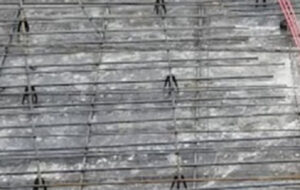
Choosing to DIY a concrete installation job can result in many issues for your project, especially if you fall into the common concrete installation errors.
There are some jobs that are less suitable for DIY than others. For most of us, concrete installation falls on that list. Concrete installation can be difficult, always requires meticulous planning, and needs the expertise of a professional. Choosing to DIY a concrete installation job can result in many issues for your project, especially if you fall into the common concrete installation errors.
Not Having Enough Concrete
When you’re planning how much concrete you need for a project, don’t round down or underestimate to save costs, and don’t skimp on the thickness of the slab. It is always better to have more than you needed than to run out and risk the integrity of the finished slab. You also must consider that the final use determines the necessary slab thickness: sidewalks only need to be 4 inches thick usually, but residential driveways must be at least 6″ thick, and commercial driveways need to be 8-10″.
Not Having The Right Tools
Concrete work is time-sensitive, so make sure that you have the proper tools on hand before you start. These should be tools specifically for concrete work since each one does a very specific job, and you don’t want the steps to be done wrong.
Not Understanding Concrete Types
There are many different types of concrete differentiated by different types of portland cement (there are five types) and different types of aggregate (from fine sands to coarse gravels), but there are also different admixtures that change the properties of the cement. These admixtures may accelerate the curing process, inhibit corrosion of steel reinforcements, reduce shrinkage, protect against the freeze-thaw cycle, and more. Make sure you’re using the right concrete for your job.
Not Using A Proper Form
The concrete form is responsible for the final shape of the slab and needs to be built to the proper specifications and sturdy enough to hold the concrete as it cures. It needs to be water-tight and should be coated to prevent the wood from absorbing moisture and warping (this also makes it easier to take the form off). Once the slab has cured, you can remove the form – don’t remove it too early.
Under- Or Overworking
Finally, concrete is not dinner in an air fryer – there is no set-it-and-forget-it. You have to smooth and work the surface of the concrete once it is poured. But overworking it is a problem as well. Concrete that is overworked can become dry too soon and crack. Make sure that you’re pouring the concrete as close to the final resting place as possible and using the proper tools, then go through the steps methodically, without rushing or skipping any.
Concrete Visions Will Get The Job Done Right
Concrete Visions has been working with clients for over 25 years. Our G&M Services installers are certified with the industry’s major firestop product manufacturers. As part of our firestop service, we can assess abnormal field conditions and, with the manufacturer’s technical support assistance, provide engineering judgments in a timely fashion to comply with contract specifications. Our Field Mechanics undergo ongoing training, including mandatory monthly safety meetings, weekly Toolbox Talks where safety and equipment information is shred, and trainings on safe work standards and safety best practices.
